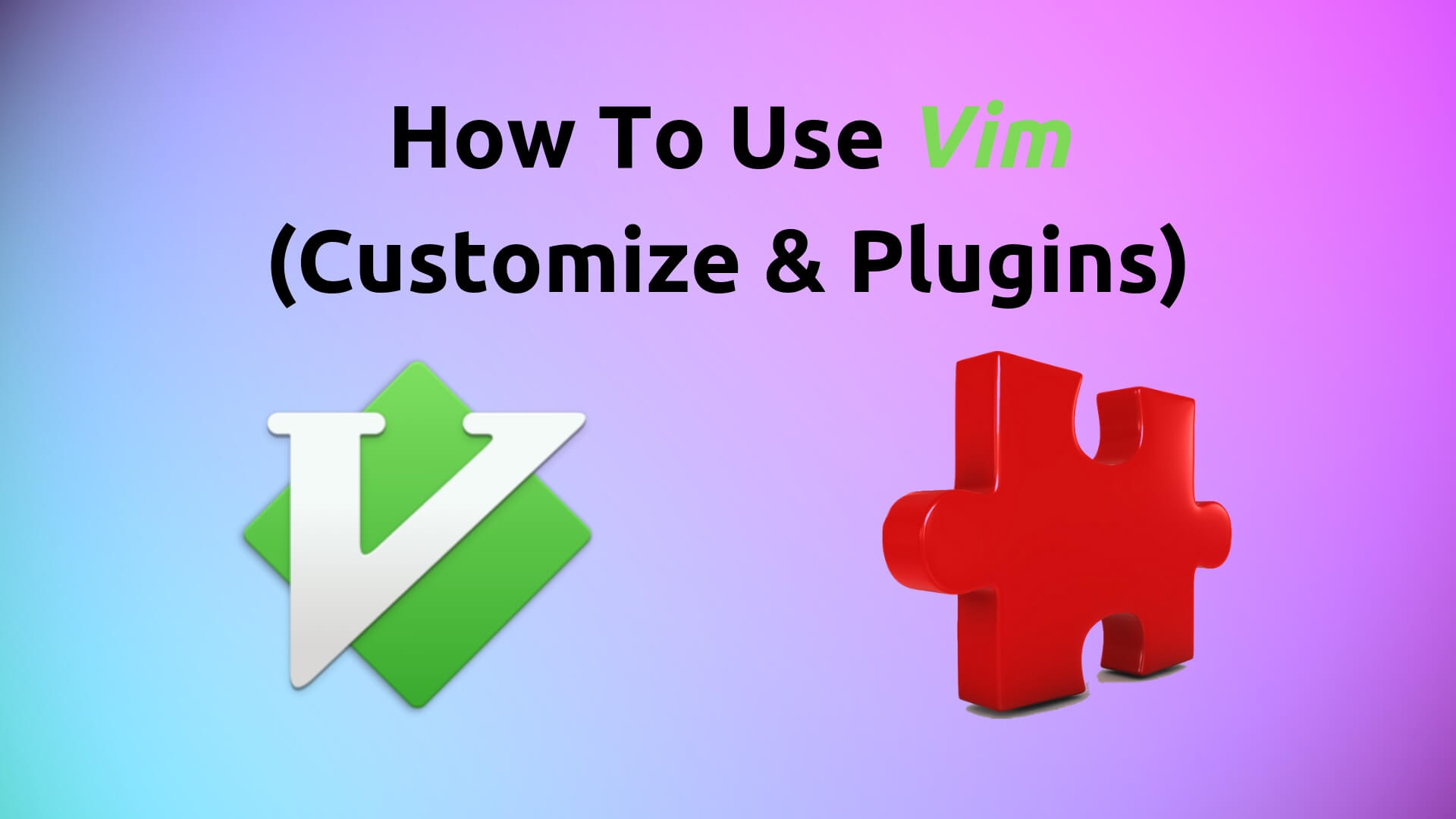
- #VIM PLUGINS INSTALL#
- #VIM PLUGINS UPDATE#
- #VIM PLUGINS MANUAL#
- #VIM PLUGINS FULL#
- #VIM PLUGINS CODE#
The docs are just not where you expect them to be ( because why use the world wide web, right?). If you have some patience and dig a little deeper you’ll find that most Vim plugins are extremely well documented. You will then raise your fist to the sky and shout in anger and frustration, and wonder how the heck people can enjoy using Vim over other editors that aren’t as painful. When that is the case, you will be surprised at the lack of information available on the web (in most cases).
#VIM PLUGINS FULL#
But you will find that, oftentimes, there will be some additional configuration needed in order to take the full advantage of a plugin. Some plugins have sensible defaults and work out-of-the-box.
#VIM PLUGINS UPDATE#
Just follow the installation instructions of any of these plugin managers and update your vimrc accordinly. These are some popular options with a very similar feature set and philosophy:
#VIM PLUGINS MANUAL#
However, installing, removing and updating plugins still requires quite a bit of manual work and, therefore, Vim users normally rely on plugin managers. Vim improved the way it manages plugins with Vim 8 and the addition of packages (a way to group and load plugins in your Vim editor). If you’re up for a more curated approach to discovering plugins then look out for more articles on my favorite plugins in the upcoming weeks and months. Vim is very different from other editors so it is very likely that you’ll find something unexpected (yet awesome) like vim-surround, targets.vim or vim-sneak. Alternatively, you can browse around and see if you find anything interesting. So if there is some feature that you’re missing from Vim, you can visit VimAwesome and just search for that missing functionality. VimAwesome is a directory of plugins sourced from GitHub (you’ll find most Vim plugins in GitHub these days), vim.org and which also includes plugins submitted by users. The best place to find Vim plugins is VimAwesome. It will provide you with a methodology and a guide to get the most out of your Vim plugins so that you can be more productive when using Vim. This article and this entire series on Vim plugins attempts to put an end to that Vim plugin underuse.
#VIM PLUGINS INSTALL#
In fact, most of the times you’ll install a plugin and forget about it. Oftentimes however, you will install a plugin and won’t take full advantage of it. Because of that, using Vim plugins can truly enhance the way you work. The cool thing about Vim plugins is that they are inbued by the spirit of Vim and take advantage of its modal nature, its preference for command composition, and the obsession of its community with being productive when coding. Like with other editors, plugins extend and customize your editor with new and exciting functionality. But there’s another amazing (and faster) way in which you can enhance your Vim experience: plugins. And you can get even further by slowly customizing and extending Vim using the methods mentioned earlier, growing your vimrc as you go adapting Vim to your development workflow. You can get extremely far using only Vim core features. The same happens with custom commands and mappings. As such, they are built of common operators and motions you use every day for coding.
#VIM PLUGINS CODE#
For instance, Vim macros are reusable units of text-editing that you create by recording your interaction with code and which you can later reuse to your heart’s content.

The interesting fact here though, is that, in order to customize Vim, you’ll find that oftentimes you’ll use the same features of the editor you normally use when programming. Any experienced Vim user will be comfortable with updating and tailoring their Vim configuration using a vimrc to include any of the things mentioned above.


In Vim, you can customize and extend your experience by defining your own operators, motions, commands, mappings, settings, macros, etc. These two features are commonplace in modern text editors but Vim brings its own special flavor to both. One of the most powerful features of Vim is its customizability and extensibility. Most of the advice is specific to Vim but the summary at the end applies to any editor. If you have that problem, then I might just have what you need to take more advantage of your plugins and become even more awesome. Raise your hand if you have installed a bunch of plugins in your editor, only remember about half of them and barely use a small portion of that good half.


 0 kommentar(er)
0 kommentar(er)
